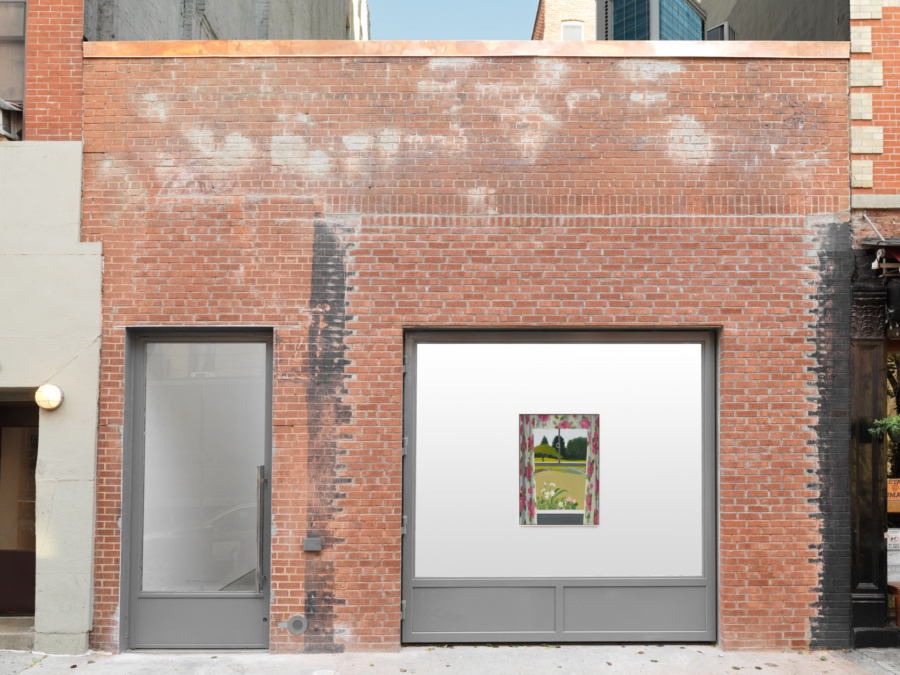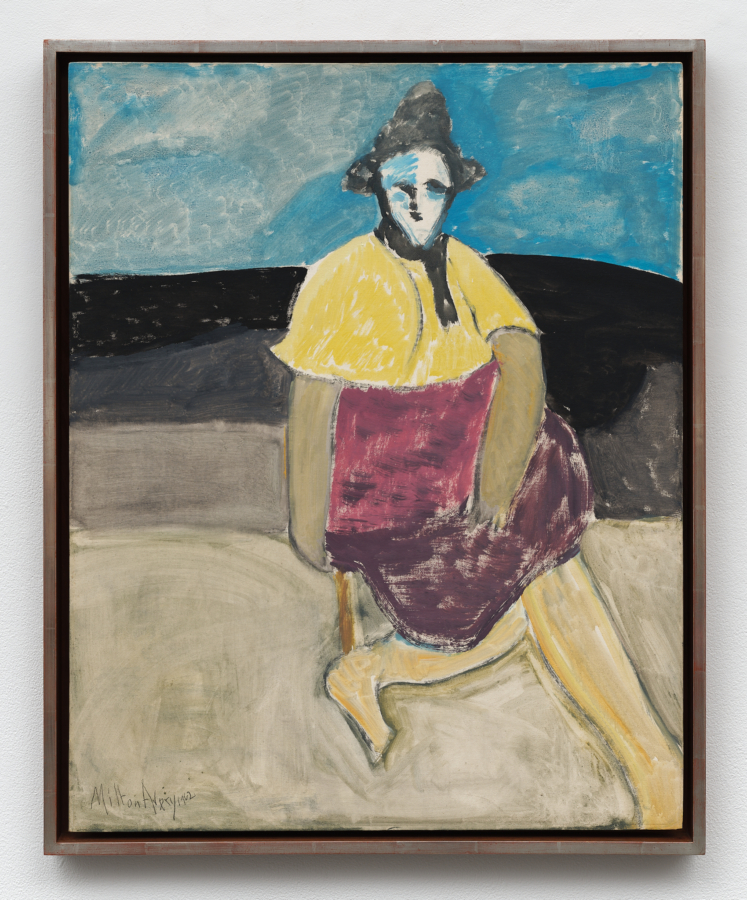November 4, 2020
Louise Fishman published by Karma, New York, 2020
Download as PDF
Louise Fishman is available here.
Louise Fishman’s 1992 Valles Marineris is a large vertical oil painted entirely with a roller: no brushwork is involved. Its first surface is a heavily yet loosely rolled skin of warm dense gray, which forms a grid for sixteen rectangular openings, a system of “windows” that bare the painting’s underbellies. The openings are green and they drip.
In the mid-’70s, the composer Gavin Bryars came upon a recording of a song sung by an old tramp living rough in London: “Jesus’ blood never failed me yet / Never failed me yet; / There’s one thing I know, / For he loves me so.” Bryars took the old man’s cracked, rapturous voice and added a dark, rapturous orchestration—strings, horns, a chorus, choirs. For the first twenty-five minutes of the 1993 CD Jesus’ Blood Never Failed Me Yet, though, we hear nothing but the old man repeatedly singing the only thing he has (we imagine). There is no diminution of joy or fervor, no matter how many times he sings his song; he could (we imagine) go on forever. Gradually, he’s joined by Bryars’s setting, and the professional musicians. Toward the end of the seventy-five-minute piece, Tom Waits begins to sing along with the tramp’s frail voice in a bass growl. Eventually Waits overwhelms the tramp’s singing, and Jesus’ blood becomes art.
The tramp’s voice is the hair shirt of the unbeautiful worn hidden beneath the beautiful. The first layer of invisible mental work beneath the serene surface of Valles Marineris is the old tramp’s unaccompanied song.
The only art I saw for a very long time was holy cards. That’s the sort of time and place I come from. At St. Patrick’s grammar school I earned my first holy card when I was five, by pretending on the first day of school not to know how to read (in order to appear normal), then, on the second day, speed-reading my way through the fifth grade’s Dick and Jane: I’d changed my mind; I wanted to be different.
The holy cards were 4-by-2¼-inch pieces of pasteboard, a prayer printed on the back, a saint’s picture on the front, and of course they are not art. Roman Catholicism (just look at the Renaissance) is simply rife with stuff. The saints were colored—or, better, colorized—as if by the hand that would eventually undo the magisterial chastity of my favorite black-and-white movies: the saints’ curly hair was either Jean Harlow peroxide blond or Joan Crawford “raven,” though without Hollywood’s kleig-lit glossiness. (There was no such thing as a redheaded saint; could I have been the only Catholic in the world who felt the temptations of Rita Hayworth?) They were all dressed in ankle-length lipstick pinks, malarial yellows, and, most of all, in BVM (Blessed Virgin Mary) baby blues. Some displayed the stigmata—bloody holes supposed to have spontaneously erupted in their palms, proof that they’d earned Jesus’s favor.
With one exception, all the saints—Joan, Barbara, Catherine, Agnes, et al.—with whom I was rewarded appeared full length on their holy cards, in states of terminal ecstasy. The exception (whose name I can’t remember) was the saint I earned for speed-reading Dick and Jane: her image stopped at her waist, the better to impress upon me the hair shirt she was wearing, tight as a corset against her naked torso. The saint’s beauty (I thought, of course, that her blond curls were beauty) paled beside this garment of self-torture. In fact, to strengthen the unbeautiful spectacle of the hair shirt, the holy-card maker had deliberately washed out beauty: the saint was a department store dummy; the hair shirt was wearing her. A hair shirt is made of rough animal hide, the hairy side facing outward. But my saint’s hair shirt was hairy both inside and out; anyone embracing her would participate in her faith. When I consider the Roman Catholic holy cards today, I think of them as covert emblems of a homosexual aesthetic.
Louise and I met in 1973 and became lovers. I wrote a novel, Lover, about the redemptive power of her painting on my writing. She had saved my work from the clutches of “beauty.” I thanked her by rewarding her with my thirty-odd-year-old saint in the clutches of her hair shirt. Then the sex stopped and we got serious.
On September 14, 1993, I went to the opening of a show of Louise’s work in New York. When I got to Valles Marineris I stopped looking at anything else. The next day I went back to the gallery and spent a long time alone with the painting. Louise had told me that the work was triggered by her passing fascination with the planet Mars. At first, I tried to agree with her—to see Valles Marineris as a painting about Mars. There is no Mars without Venus, I decided; the sixteen glimpses of greens Valles Marineris offers are Venuses pressing through Martian enjambments of dark, Venuses rising, minus the seashells (and minus the Venuses), from Botticelli’s oceans. The Mariner space probe has encountered Venus as well as Mars.
But in the end I had to decide that Valles Marineris probes another sort of space: the essential unworldliness, the religiosity, of the painter. Louise is a religious painter without knowing it. She does not “wear” her work, her work wears her. It’s neither Venus nor oceans making their appearance through the surface calm of Valles Marineris, it’s her hair shirt. The painting is a holy card.
On January 10, 1996, Louise and I had not yet met, but we were both in the audience watching the first performance of Yvonne Rainer’s dance The Mind is a Muscle: Trio A, at New York’s Judson’s Church Dance Theater in Washington Square. The Mind is a Muscle frightened us, then kept us awake until it changed our lives and our work. Rainer had not only disposed of technique, she had turned her back on the beautiful—which is often no more than the desire to please—as though it were of no consequence.
The second invisible layer beneath the visible Valles Marineris is The Mind is a Muscle, which was Louise’s first glimpse of the hair shirt.
The third layer beneath the surface of Valles Marineris is Donatello’s carved-wood Magdalen. Gaunt, half starved, she’s been in the wilderness so long that her hair shirt—which she’s grown from her own scalp—covers nearly all her body. Gradually, Louise has disappeared from her paintings. She exists because her work, her hair shirt, knows her.



